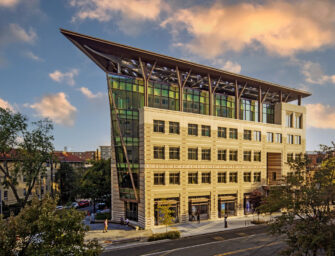AGU staff commits to enhancing its own diversity
Starting on Thursday, I will have been at AGU for one month. I have filled my days with opportunities to meet individually and collectively with board, council, members and staff. With #AGU20 Fall Meeting starting in less than two and a half months, my conversations and learning will only increase. I am looking forward to meeting all of you soon.
One of the questions I’m asked frequently is to give my first impressions of AGU and our Earth and space sciences community.
Quite simply, I’m in awe.
As only the fourth CEO of AGU, I am taking the baton from the teams created before me, composed from the board, council and leadership members to volunteers to past executive directors/CEOs to staff. Together with these groups, we’ll further expand our community to accomplish our new strategic plan. The possibilities and potential are exciting and endless.
There are reoccurring themes in the conversations I am having with the passionate AGU community such as climate change, advancing discovery and solutions science from useable to used and diversity and inclusion. When I started in mid-August, Robin Bell and Susan Lozier (AGU’s President and President-Elect) had just announced the 8 action areas that AGU was taking to combat systemic racism. AGU’s commitment to action struck me to my core. I’ve devoted my life to creating equitable organizations, communities and societies. As an openly gay man, I know what it is like to institutionally be denied basic human rights. AGU’s commitment to action reassured me that my values and AGU’s values are aligned.
A lot more work needs to be done to address the inequities in the Earth and space sciences community as well as our at-large society. But unlike other sectors, we – and many times led by AGU – have already started this journey over the last few years. There have been some important changes and improvement made, but we have so much more to do.
Recently, the AGU team hosted a “Coffee and Connections” (an informal staff gathering) discussion on addressing race and racism. As part of our conversation, the staff read Verna Myers’ book, What If I say the Wrong Thing: 25 Habits for Culturally Effective People. We also split the staff into small groups to share, if they felt comfortable, any personal stories. One of the recurring comments I heard is that we must make sure all voices are at the table.
During my first virtual all staff meetings, I was struck by the beautiful diversity that filled my screen as I scrolled through the AGU staff. I was so impressed by what I saw that I asked if we could share the staff composition with you. Using the self-reported information, AGU staff is made up of:
Gender
- 70% = female
- 30% = male
Race/ethnicity
- American Indian/Alaskan Native = 1%
- Asian = 5%
- Black = 27%
- Hispanic = 3%
- More than 2 races =5%
- White = 59%
Education
- Associate degree = 2%
- Bachelor’s degree = 43%
- Doctorate degree = 12%
- High school diploma = 8%
- Jurisprudence doctor degree = 3%
- Master’s degree = 32%
These are only some of the methods to measure diversity. For instance, we have not reported on physical or neuro diversity at AGU. However, the information gives some details on how AGU is doing as an organization. We are committed to assessing our diversity against other leading organizations known for their commitment to equity. We’ll make sure to let you know how we are doing and when the report will be released.
We are proud of what we have done so far within our team, but we also recognize we can do more. We remain committed to creating the most diverse team as possible to serve you, AGU and the science community better.



There are no comments
Add yours